Peter Karow on:
[Wikipedia]
[Google]
[Amazon]
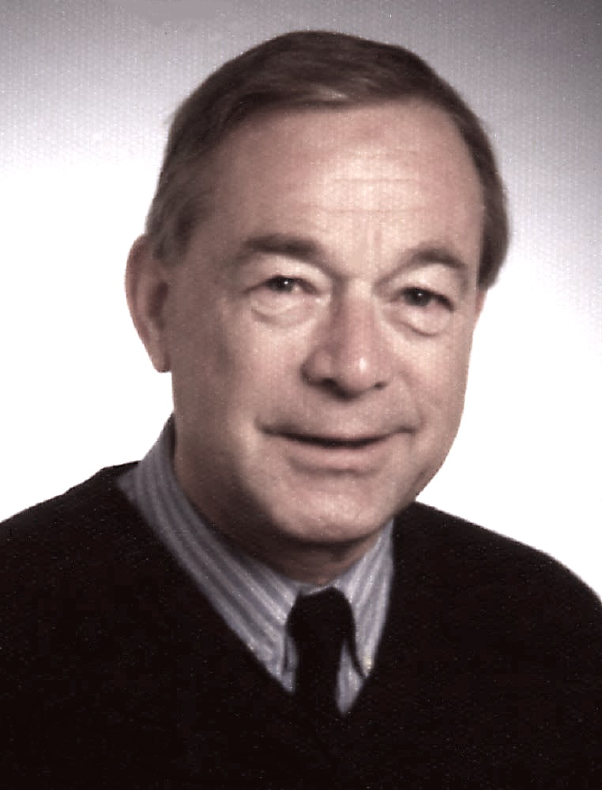 Peter Karow (born 11 November 1940) is a German entrepreneur, inventor and
Peter Karow (born 11 November 1940) is a German entrepreneur, inventor and
as speaker at the ''University of Macedonia Press'' and is known for his work on computer fonts. He contributed with several books and patents to the development of operating systems for computers. He is recognized as the inventor of outline computer fonts.
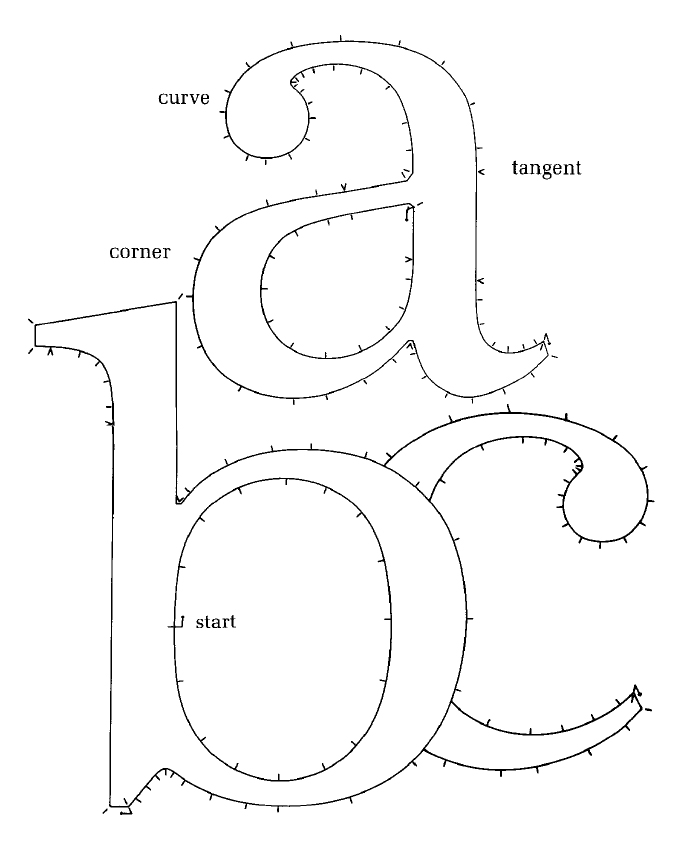
 Printouts of single characters in a height of approximately 10 cm were
Printouts of single characters in a height of approximately 10 cm were
 After the output for
After the output for

 Software that enables to calculate interpolations and extrapolations between one light and one
Software that enables to calculate interpolations and extrapolations between one light and one

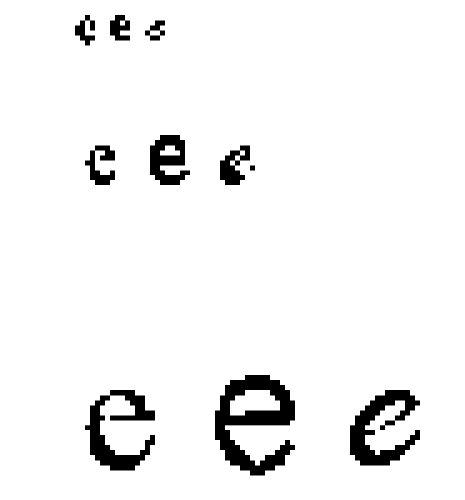
 In order to display characters by means of electronic devices such as electronic typesetters,
In order to display characters by means of electronic devices such as electronic typesetters,

 Initially, the graphical user interfaces on monitors were black and white, and consequently the display of small type sizes was very poor due to jagged edges. Peter Karow tried to find an inexpensive solution to enhance the display by means of using grayscale instead of just black and white, but this solution did not immediately gain acceptance. As late as 1995, Adobe took his advice and then used grayscale in its
Initially, the graphical user interfaces on monitors were black and white, and consequently the display of small type sizes was very poor due to jagged edges. Peter Karow tried to find an inexpensive solution to enhance the display by means of using grayscale instead of just black and white, but this solution did not immediately gain acceptance. As late as 1995, Adobe took his advice and then used grayscale in its

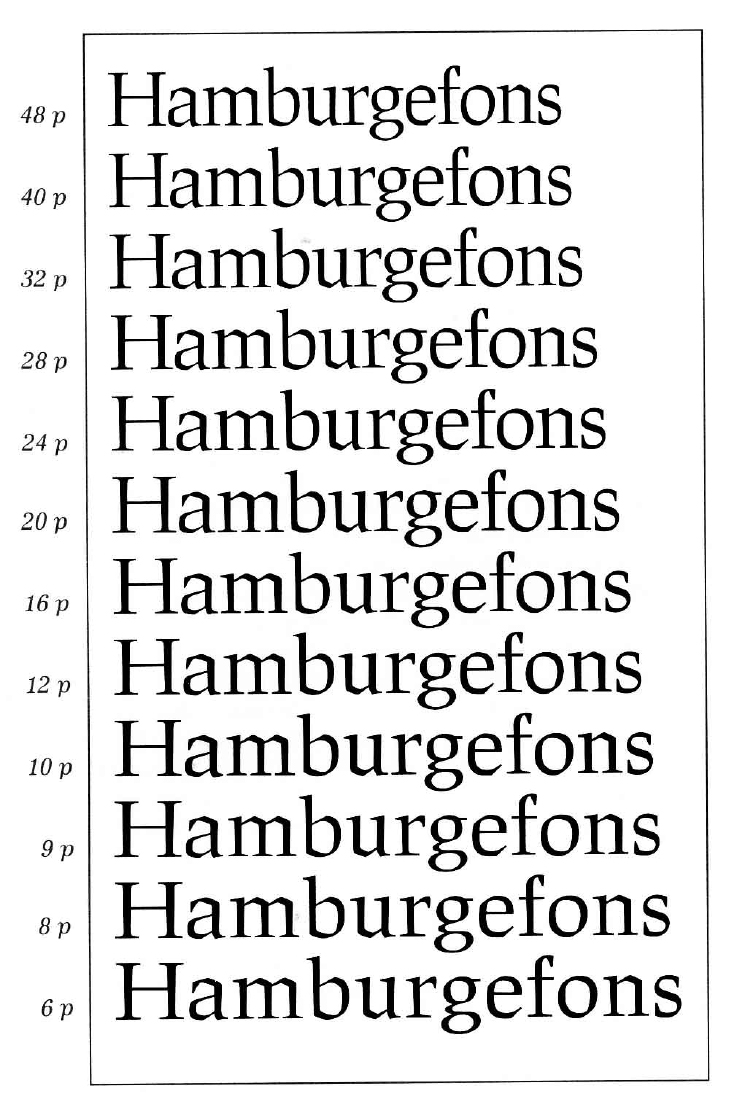 Hot metal typesetting in earlier times used the so-called optical scaling, when fonts were cut bolder and wider with decreasing point size. With analogue calculations Peter Karow made it possible to automatically adjust the fonts to certain point sizes. Nowadays, however, this technique is not often used.
Hot metal typesetting in earlier times used the so-called optical scaling, when fonts were cut bolder and wider with decreasing point size. With analogue calculations Peter Karow made it possible to automatically adjust the fonts to certain point sizes. Nowadays, however, this technique is not often used.
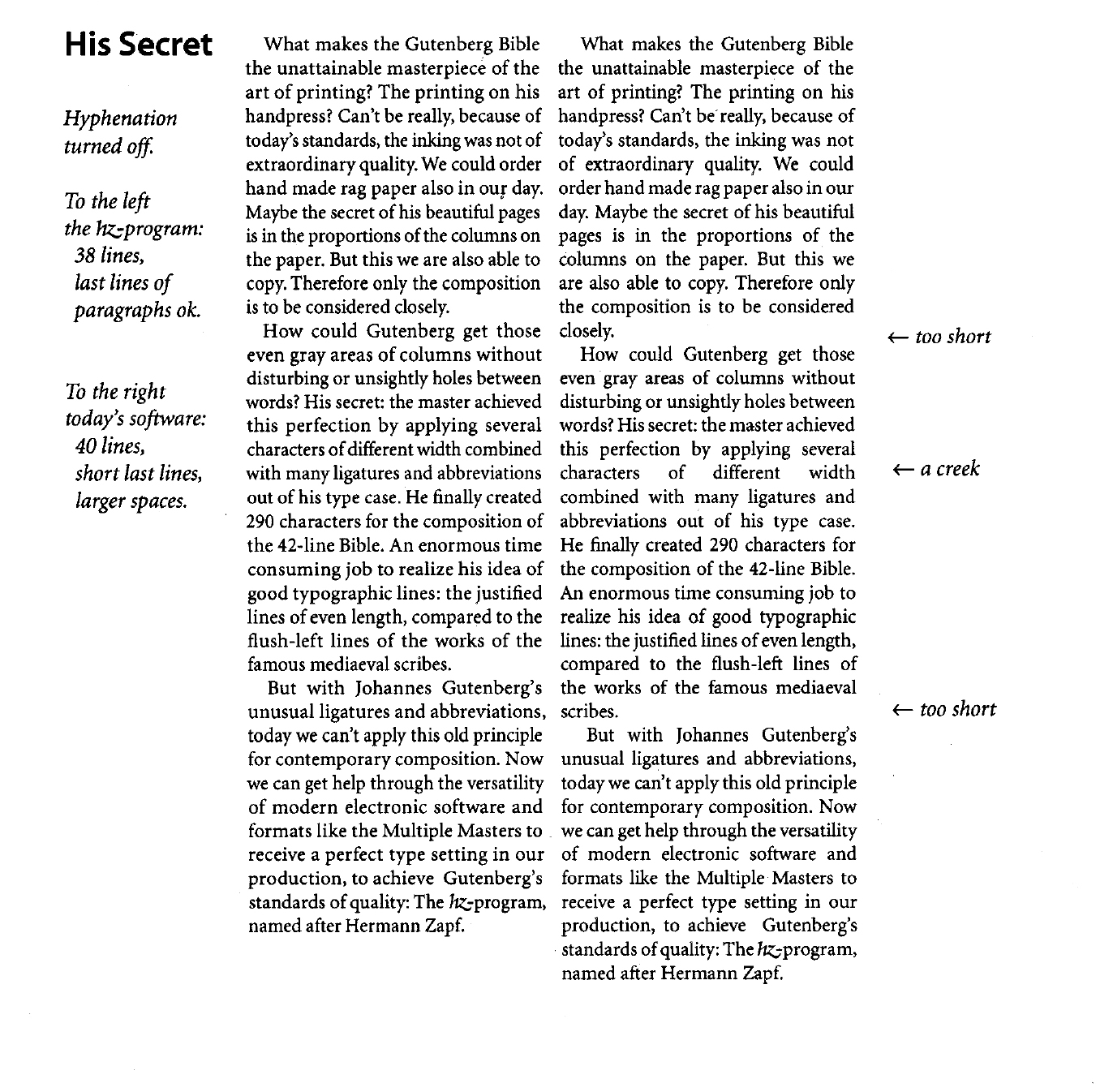 In 1992, Peter Karow developed the
In 1992, Peter Karow developed the
''Dr. Peter Karow Award''
– Microsoft typography, microsoft.com, 1. October 2003
– short profile in the ''University of Macedonia Press'' (ictvc.org)
www.advision-digital.de
– AdVision digital GmbH produces the AdCyclopedia
– Two Decades of Typographic Research at URW: a Retrospective
Hermann Zapf, About micro-typography and the Hz-program (PDF, 230 KiB)
 Peter Karow (born 11 November 1940) is a German entrepreneur, inventor and
Peter Karow (born 11 November 1940) is a German entrepreneur, inventor and software
Software is a set of computer programs and associated documentation and data. This is in contrast to hardware, from which the system is built and which actually performs the work.
At the lowest programming level, executable code consists ...
developer. He holds several patents in the field of desktop publishing
Desktop publishing (DTP) is the creation of documents using page layout software on a personal ("desktop") computer. It was first used almost exclusively for print publications, but now it also assists in the creation of various forms of online c ...
Peter Karowas speaker at the ''University of Macedonia Press'' and is known for his work on computer fonts. He contributed with several books and patents to the development of operating systems for computers. He is recognized as the inventor of outline computer fonts.
Career
Born in Stargard, Pomerania, after graduating from high school in 1960 inSchöningen
Schöningen is a town of about 11,000 inhabitants in the district of Helmstedt, in Lower Saxony, Germany.
Geography
The town is located on the southeastern rim of the Elm hill range, near the border with the state of Saxony-Anhalt. In its curren ...
near Braunschweig, he enrolled at the University of Hamburg
(male), (female) en, Hamburger(s),
Hamburgian(s)
, timezone1 = Central (CET)
, utc_offset1 = +1
, timezone1_DST = Central (CEST)
, utc_offset1_DST = +2
, postal ...
to study physics. He married in 1969 and has two children. After receiving his PhD in 1971, he co-founded the company URW Software & Type GmbH in Hamburg. In 1975, his Ikarus (typography software)
Ikarus is a type design and production software developed by URW foundry, for converting existing typefaces and logos into digital format for use on computer driven printing, plotting and sign cutting devices.
It was licensed by major foundries su ...
was introduced to members of Association Typographique Internationale
The ATypI () or Association Typographique Internationale (the International Typography Association) is an international non-profit organisation dedicated to typography and type design. The primary activity of the association is an annual fall confe ...
in Warsaw. Afterwards, Ikarus was used all over the world for the digitization of fonts. Between 1975 and 1995, URW digitized a large amount of fonts for companies such as IBM, Siemens
Siemens AG ( ) is a German multinational conglomerate corporation and the largest industrial manufacturing company in Europe headquartered in Munich with branch offices abroad.
The principal divisions of the corporation are ''Industry'', '' ...
, Microsoft
Microsoft Corporation is an American multinational technology corporation producing computer software, consumer electronics, personal computers, and related services headquartered at the Microsoft Redmond campus located in Redmond, Washing ...
, Apple Inc., Adobe
Adobe ( ; ) is a building material made from earth and organic materials. is Spanish for ''mudbrick''. In some English-speaking regions of Spanish heritage, such as the Southwestern United States, the term is used to refer to any kind of e ...
, Linotype, Monotype, Rudolf Hell
Rudolf Hell (19 December 1901 – 11 March 2002) was a German inventor and engineer.
Career
Hell was born in Eggmühl. From 1919 to 1923, he studied electrical engineering in Munich. He worked there from 1923 to 1929 as assistant of Prof. Ma ...
and numerous Japanese companies.
Contributions
Digitization of outlines for typefaces (1972) with Ikarus


digitized
DigitizationTech Target. (2011, April). Definition: digitization. ''WhatIs.com''. Retrieved December 15, 2021, from https://whatis.techtarget.com/definition/digitization is the process of converting information into a digital (i.e. computer- ...
on a digitizer tablet of Aristo along their outlines, marking various points of support (beginning, corner, tangent and curve) with an accuracy of 1/100 mm. This invention together with a newly developed structure for storing and encoding single characters inside a font
In metal typesetting, a font is a particular size, weight and style of a typeface. Each font is a matched set of type, with a piece (a "sort") for each glyph. A typeface consists of a range of such fonts that shared an overall design.
In mod ...
made characters, but also any other graphical signs freely scalable for the computer and available for other mathematical operations.
Calculation of the first typeface variations (1973)

plotter
A plotter is a machine that produces vector graphics drawings. Plotters draw lines on paper using a pen, or in some applications, use a knife to cut a material like vinyl or leather. In the latter case, they are sometimes known as a cutting pl ...
s was programmed successfully - to make possible comparing digital output and original -, more software was developed to calculate first variations of fonts, for example italic, outlined and shaded typefaces.
Interpolation of typefaces (1973)


bold
In typography, emphasis is the strengthening of words in a text with a font in a different style from the rest of the text, to highlight them. It is the equivalent of prosody stress in speech.
Methods and use
The most common methods in W ...
font version was than added and made it possible to create fonts such as ultra-light, semi-bold and extra bold variations. This invention drastically reduced time and effort for font manufacturers to create these intermediate fonts and was frequently used, particularly in Japan.
Text embroidery (1975)
In 1975, Peter Karow invented a software program for the company Gunold in Stockstadt, Germany, that made automatic stitching of embroidered text possible worldwide for the first time.Calculation of bitmap fonts (rasterizing 1975)



dot matrix
A dot matrix is a 2-dimensional patterned array, used to represent characters, symbols and images. Most types of modern technology use dot matrices for display of information, including mobile phones, televisions, and printers. The system is al ...
or laser printers and particularly computer monitors
A computer monitor is an output device that displays information in pictorial or textual form. A discrete monitor comprises a visual display, support electronics, power supply, housing, electrical connectors, and external user controls.
The di ...
, a fast calculation of bitmaps in any size (resolution) is crucial. In 1965, Dr. Rudolf Hell invented the Digiset, the first electronic typesetter. In 1970, Xerox put into operation the first small laser printer, and three years later the first PC was developed with a graphical user interface
The GUI ( "UI" by itself is still usually pronounced . or ), graphical user interface, is a form of user interface that allows users to interact with electronic devices through graphical icons and audio indicator such as primary notation, inste ...
that used a bitmap memory for the creation of the video signal
Video is an electronic medium for the recording, copying, playback, broadcasting, and display of moving visual media. Video was first developed for mechanical television systems, which were quickly replaced by cathode-ray tube (CRT) systems ...
.
Character hinting (1975)
Peter Karow realized very quickly that - in the case of coarse resolutions -the mere calculation of bitmaps led to images of letters that appeared distorted through random rasterization. In order to prevent these effects, he invented additional information for letter characteristics such as vertical and horizontal linear or curved strokes orserifs
In typography, a serif () is a small line or stroke regularly attached to the end of a larger stroke in a letter or symbol within a particular font or family of fonts. A typeface or "font family" making use of serifs is called a serif typeface ( ...
and their classification with regard to upper and lower case letters. This facilitated the creation of improved bitmaps that could then be used as bitmap fonts for dot matrix and laser printers or electronic typesetters.
In 1985, based on this concept, John Warnock and Bill Caxton from Adobe developed “Hinting on the Fly” for PostScript fonts. This enabled the use of generally available fonts on any computer, printer and typesetter.
In 1988, Peter Karow worked as an advisor for Apple Inc. during the development of hinting for TrueType fonts. In 1992, this method of font storage was adopted by Microsoft. Five years later both font storage technologies were combined as OpenType.
Character pair kerning (1981)
From 1981 to 1991, together with Margret Albrecht from Hamburg, Peter Karow devoted himself to the automation ofkerning
In typography, kerning is the process of adjusting the spacing between Character (symbol), characters in a Typeface#Proportion, proportional font, usually to achieve a visually pleasing result. Kerning adjusts the space between individual le ...
, i.e. the calculation of kerning values for the improvement of typesetting. These values had previously been determined empirically by font designers.

Character grayscaling (1981)

Adobe Acrobat
Adobe Acrobat is a family of application software and Web services developed by Adobe Inc. to view, create, manipulate, print and manage Portable Document Format (PDF) files.
The family comprises Acrobat Reader (formerly Reader), Acrobat (forme ...
program for the display of texts on monitors. Today, all characters displayed on screens use grayscale for smoothing the edges.
Signus system (1983)
In 1983, the Ikarus Program evolved into the Signus System, a system that makes it possible to cut text, logos and other signs into self-adhesive foil for outdoor advertising. Today, this signage technology is referred to as "computer writing".
Optical scaling of fonts (1991)

Element separation of Kanji characters (1992)
The Japanese companyFujitsu
is a Japanese multinational information and communications technology equipment and services corporation, established in 1935 and headquartered in Tokyo. Fujitsu is the world's sixth-largest IT services provider by annual revenue, and the la ...
hired Peter Karow and Jürgen Willrodt from Hamburg to develop a method that would automatically break down Kanji characters into single elements. This method made it possible to store the Kanji font using only 20% of the previously needed storage space without any loss of quality after reassembling the elements.
Paragraph justification (1992)
 In 1992, Peter Karow developed the
In 1992, Peter Karow developed the Hz-program
Hz-program was a proprietary, patented typographic composition computer program, created by German typeface designer Hermann Zapf. The goal of this program was - "To produce the perfect grey type area without the rivers and holes of too-wide word ...
, the automation of the paragraph justification, together with the well-known typographer Hermann Zapf
Hermann Zapf (; 8 November 1918 – 4 June 2015) was a German type designer and calligrapher who lived in Darmstadt, Germany. He was married to the calligrapher and typeface designer Gudrun Zapf-von Hesse. Typefaces he designed include Pa ...
and Margret Albrecht. The optimization of the paragraph justification was implemented using an algorithm developed by Donald Knuth along with automated kerning and optical scaling. In 1995, the underlying ideas and algorithms were passed along to the company Adobe
Adobe ( ; ) is a building material made from earth and organic materials. is Spanish for ''mudbrick''. In some English-speaking regions of Spanish heritage, such as the Southwestern United States, the term is used to refer to any kind of e ...
, which incorporated them into their program InDesign.
Chapter justification (1995)
Analogous to the development of the paragraph justification, Peter Karow and Margret Albrecht started working on an automated chapter justification. They succeeded in having each chapter of a book always start on a right page (recto
''Recto'' is the "right" or "front" side and ''verso'' is the "left" or "back" side when text is written or printed on a leaf of paper () in a bound item such as a codex, book, broadsheet, or pamphlet.
Etymology
The terms are shortened from ...
) and end on a left page ( verso) while avoiding widow lines and orphan lines. In 1996, a patent application was filed for this method at the company of Adobe
Adobe ( ; ) is a building material made from earth and organic materials. is Spanish for ''mudbrick''. In some English-speaking regions of Spanish heritage, such as the Southwestern United States, the term is used to refer to any kind of e ...
, which has yet to be used in any typesetting program.
AdCyclopedia (1999)
On behalf of the company AdVision digital GmbH in Hamburg, Peter Karow developed the AdCyclopedia, a database for current and historic ads in newspapers, magazines, TV, internet, billboards, movies and emails. In 1999, the GWA headquarters (German Association of Communication Agencies) entered into a cooperation with the company AdVision digital GmbH in order to provide its members and their customers with an effective competitor monitoring tool on the internet. Today, the AdCyclopedia is extended to monitor spendings for advertising (budgets) per product, brand, company, country, and period.Awards
* 2003: ''Dr. Peter Karow award'' for Font Technology & Digital Typography of theDutch Type Library
Dutch Type Library is a digital font foundry based in 's-Hertogenbosch, Netherlands, established in 1990 by Frank E. Blokland. DTL designs digital fonts and develops font software. Alongside original designs such as the Documenta and Caspari famil ...
(DTL)– Microsoft typography, microsoft.com, 1. October 2003
Publications
* ''Digital Typefaces.'' Springer-Verlag, Berlin Heidelberg New York London Paris Tokyo, 1994, * ''Font Technology.'' Springer-Verlag, Berlin Heidelberg New York London Paris Tokyo, 1994, * ''Typeface Statistics.'' URW Verlag, Hamburg, 1993, * ''PrintWorks.'' URW Verlag, Hamburg, 1994, * ''EuroWorks.'' URW Verlag, Hamburg, 1994, * ''Шрифтовые технологии.'' Описание и инструментарий. Издательство «Мир», Moscow, 2001,External links
*– short profile in the ''University of Macedonia Press'' (ictvc.org)
www.advision-digital.de
– AdVision digital GmbH produces the AdCyclopedia
– Two Decades of Typographic Research at URW: a Retrospective
Hermann Zapf, About micro-typography and the Hz-program (PDF, 230 KiB)
References and Patents
{{DEFAULTSORT:Karow, Peter 1940 births Living people German typographers and type designers People from Stargard People from the Province of Pomerania